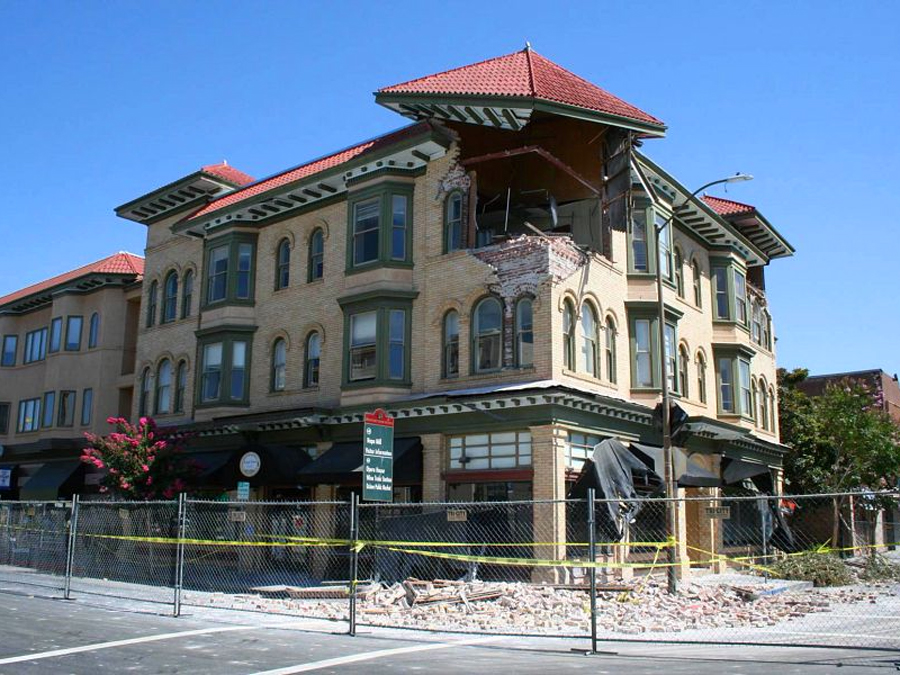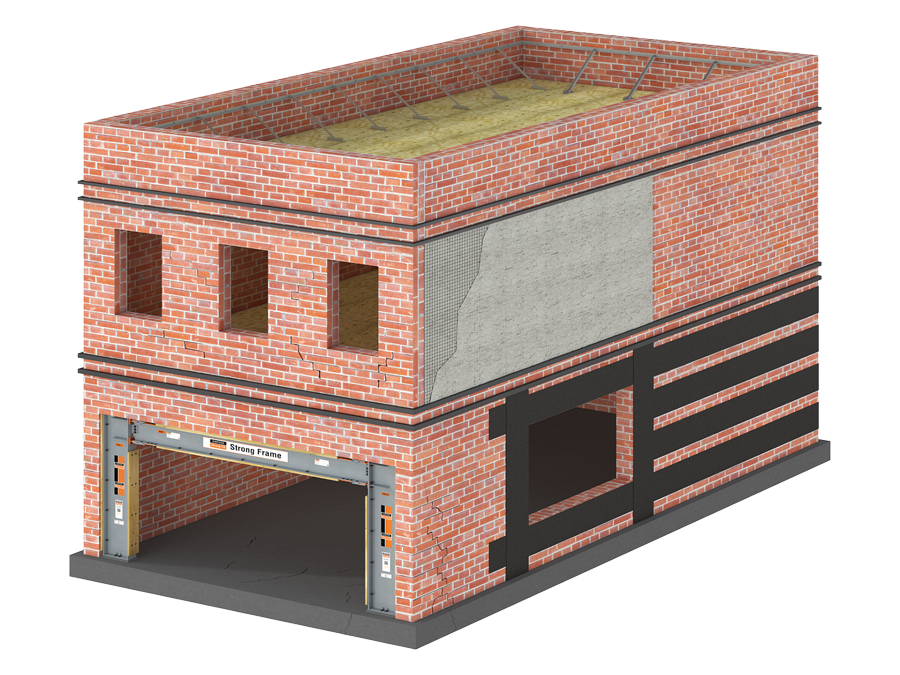

URM Building Retrofit
Proven Solutions for the Retrofit, Repair, Addition and Change of Occupancy of Existing URM Buildings
An unreinforced masonry (URM) building generally refers to a 1- to 5-story structure constructed of flexible wood framed floor and roof systems, wood framed interior framing, and exterior URM walls of two-wythe to four-wythe clay brick, although hollow concrete block or adobe might be used. This type of construction was commonplace from the 1800’s to early 1900’s, but is not allowed today except in low seismic regions. These buildings are used for commercial, government, and residential occupancies, often are in older and densely populated areas, and have historical significance.


Damage after 6.0 magnitude earthquake that struck Napa, CA in 2014
URM Building Vulnerabilty
Unreinforced masonry buildings in moderate to high seismic and wind areas can be a disaster in waiting. Most URM structures were not designed or constructed with many, if any, measures to survive a future seismic or wind event. In addition, there have been many advances in understanding the loads generated in wind and seismic events and a structure’s response to those loads since URM structures were originally built. As a result, most URM structures are very susceptible to partial or complete failure risking lives and business continuity if not retrofitted.
Parapets
- Inadequate bracing
Diaphragms
- Inadequate wall to roof/floor connections
- Inadequate shear strength
Walls
- Inadequate in-plane strength
- Inadequate out-of-plane strength
Veneers
- Inadequate attachment
Non-structural Components
- Inadequate attachments to structure
Building Configuration
- Open front
- Weak or soft-story
Fortunately, there are tools available for engineers to assess the vulnerabilities and design the needed retrofits to mitigate the potential loss of life and business continuity. These tools include ASCE 41 Seismic Evaluation and Retrofit of Existing Buildings, FEMA P-2006 ASCE 41 Application Guide, the International Existing Building Code, and FEMA 547 Techniques for the Seismic Rehabilitation of Existing Buildings.

URM Building Retrofit Applications
Simpson Strong-Tie offers various product and retrofit solutions to apply to some URM building vulnerabilities that can be used to reduce the damage experienced in a seismic or wind event. These are just a few areas that should be considered by the qualified designer and the building owner when considering strengthening solutions for a URM building. Implementing all or some of these retrofit solutions can go a long way to decrease damage and repair costs and to increase the resiliency of these often historic structures as well as to increase life safety for the public that inhabits them.